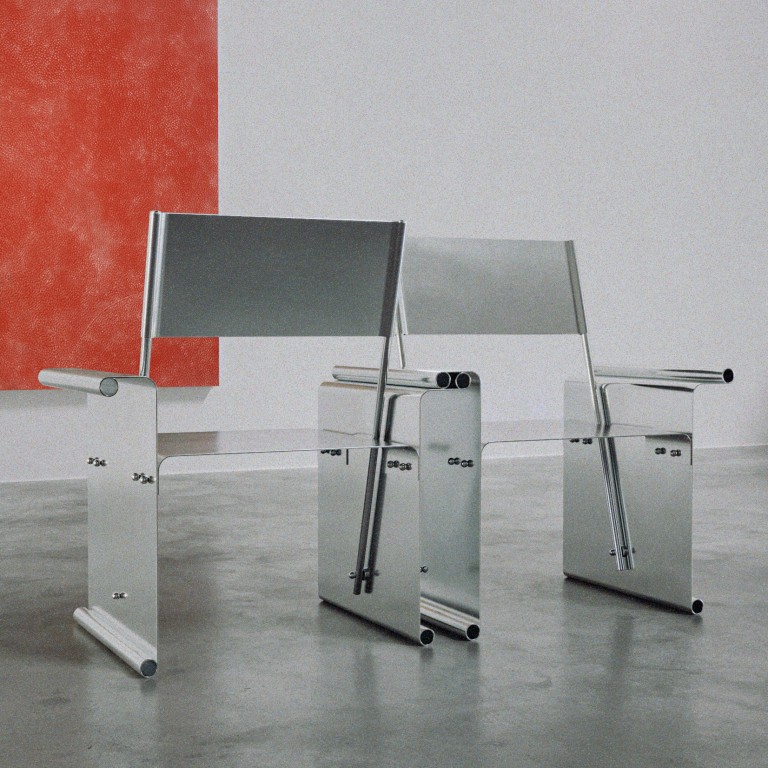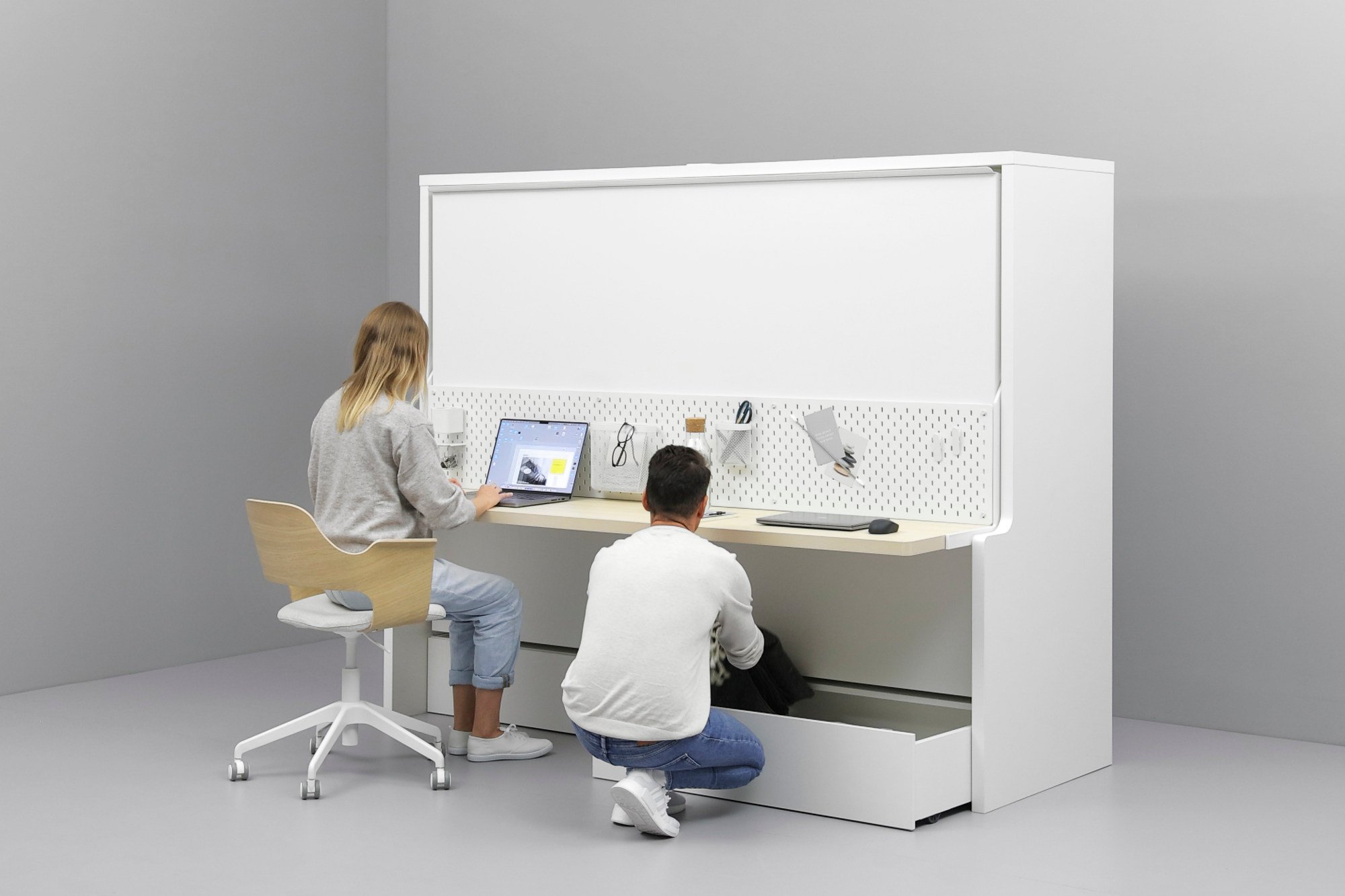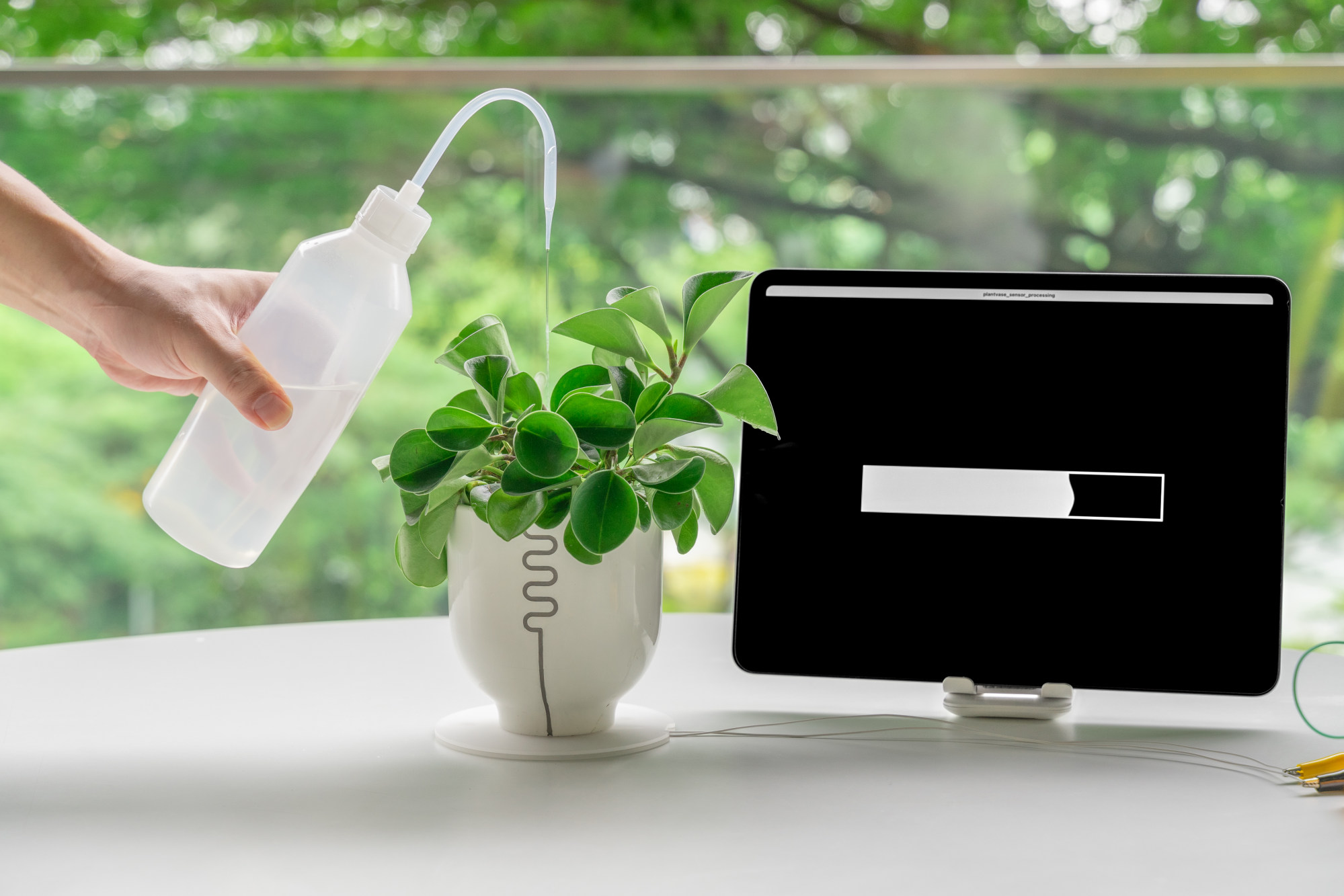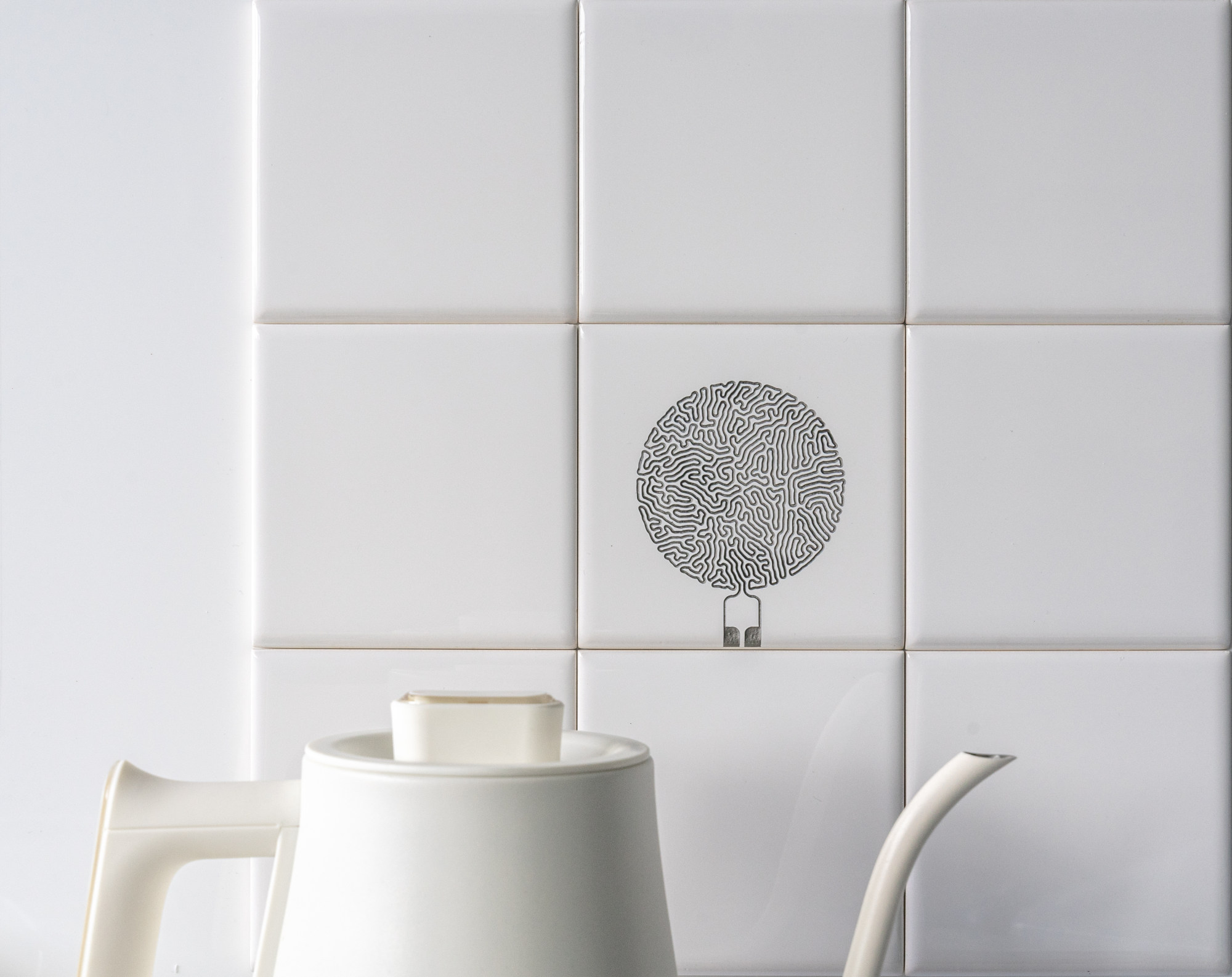
The magic of multifunctional design, from a new Ikea furniture collection that pushes ‘the limits of small spaces’ to seats that encourage movement
- Consumers expect a higher level of service from the things they buy, and designers are exploring ways to make furniture and other items multifunctional
- A bench from a Hong Kong studio encourages users to shift their weight, which is better for backs. A new Ikea collection features a desk that doubles as a bed
A chair was made to sit upon, a bed to sleep in, a bowl to eat from.
These days, it seems primary purpose alone is not enough. As with the increasing functionality we demand of our phones, consumers expect a higher level of service from their possessions.
Designers are exploring innovative ways to meet this demand.
To pause and fully absorb an artwork, the Hong Kong-based British designer Ella Bridgland believes we need somewhere to sit and be still.
In the lead-up to Hong Kong Art Week recently, Bridgland, founder of interior architecture, design and art consultancy Studio Ella, designed the Art Bench.
Seating, she explains, is an often overlooked component of an art space or museum.

“The primary function of a gallery is to look at art. However, the typical art viewing experience is dictated by the tiring of our bodies, cutting short the time needed to just ‘be’ in the presence of something to fully understand it,” she explains.
“Art Bench invites viewers to pause and spend time actively engaging with art, rather than just moving through spaces that contain it.”
Intended to be “almost invisible”, and devoid of decoration, its polished stainless steel surfaces “create a dialogue between object, art and space”, she adds.
He’d never designed a hotel before he took on the Regent Hong Kong renovation
The adjustable backrest, referencing the seating of Hong Kong’s iconic Star Ferry, is a nod to the heritage of the British-born designer’s adopted home. In the Art Bench, she says, this affords a double-sided viewing experience, allowing spectators “to alter the position to suit their gaze”.
The modular designs can seat one or two people, with the ability to add on multiple modules.
Studio Ella’s Art Bench is in the production stage and Bridgland says she is in dialogue with a number of galleries, but is “open to speaking with partners who would be interested in placing it”.

Meanwhile, the experimental design team at Studio Ryte, headed by architect and founding partner Dennis Cheung Hoi-kwan, were busy dreaming up furniture with purpose to exhibit at the Salone del Mobile – the annual furniture fair in Milan, in Italy.
The Wave Bench is a lightweight plywood seat whose wavy geometry serves both as the bench’s structure and to promote movement in the user. Its curvaceous form, achieved by diagonally layering a series of 0.5mm (0.02 inch)-thick veneers over a mould made of foam and MDF or medium-density fibreboard, provides rigidity and stability, Cheung explains.
The sitting surface is designed to support posture in several different positions, encouraging users to shift their weight, which is better for backs.

Apart from providing illumination, Studio Ryte’s String Light enhances ambience by reducing noise. Made of polyethylene terephthalate (PET) plastic – 60 per cent of it recycled content – the acoustic innovation lies in the shape and materials used. Leveraging PET’s inherent sound-absorbing characteristics, the design team used curves to increase its surface area and volume.
Cheung says that, when PET panels are attached to walls, a noise reduction coefficient (NRC) rating of 0.3 is achieved – NRC ratings range from 0 to 1. The String Light’s NRC value is significantly better, at 0.7 to 0.9.
“The beauty of this design, which takes LED lights, is that it can be increased or shortened in length, depending on user needs,” Cheung says. He sees potential applications in offices, restaurants and open-plan homes – anywhere noise becomes a problem.

Cheung adds that these products show how every object, no matter how ordinary in purpose, can be transformed into a pleasing piece through decorative yet functional manipulation.
Even Ikea is getting in on the act. The ubiquitous Swedish furniture brand has Hong Kong households in mind with its new-concept bed – part of a range of multifunctional furniture designed “to push the limits of small spaces”.
By day, it is a work desk. Come sleep time, with a simple push of one hand the piece converts into a bed with a mattress and bedding already made up. The desk remains horizontal, so the laptop and work items on it can stay in place.

Yasushi Kusume, innovation and creative manager at Ikea, says the aim of this piece in the brand’s exploratory furniture range is to optimise the “experience” of both functions.
“As a desk we wanted to create the best work environment, but then change the mood to nudge people towards sleep,” he explains. “So in the bed component we’ve added a nice warm light, and a place to put a book.” Storage is provided below the desk, and inside the bed.
Ease of operation would be key, so the team ensured the design would pass what it calls the “coffee cart test”.
“We expect people to do this twice a day. So the mechanism can be operated with one hand, holding a coffee cup in the other,” Kusume says.
How office space can be designed to remain relevant in new era of hybrid work
As urban living spaces shrink, Ikea reasons, the focus is shifting to how liveable the home is, rather than how large it is. According to Kusume, the brand’s research shows the increasing need for solutions allowing flexible use of space, where a room or even a piece of furniture can be used for different activities.
The desk/bed can also be paired with another new multifunctional piece – a chair whose adjustable back allows it to convert from desk chair to dining chair – and is expected to be in stores in October in Hong Kong, which, along with Poland, is a pilot market for the desk/bed combo.
It is a bulky piece of furniture, but Ikea has considered conditions in Hong Kong, too: the components are flat-packed into boxes that will fit inside the lift of a residential building.

With renters in mind, the design allows the piece to remain stable without needing to be fixed to a wall. “People living in small apartments tend to move more frequently so we’ve worked on the disassembly, too – it can be taken down easily to move to another place,” Kusume says.
If tech-enabled smart homes really are the future, Singaporean designer Clement Zheng thinks a softer aesthetic is a better approach. “The last thing we need is another plastic remote control,” he says.
In a research project at the National University of Singapore (NUS), Zheng and his team developed a range of interactive ceramics with circuits built in, so that the item, be it a dinner bowl, plant pot or floor or wall tile, can communicate with the Internet of Things wirelessly.
In the case of indoor plants, the pot acts as a sensor monitoring moisture levels in the soil, communicating with an internet-connected minicomputer embedded in the dish at the bottom. “So when it needs watering, the plant pot could potentially send a message to your phone,” Zheng says.
A circuit engraved as a sliding panel on dinnerware turns a plate or bowl into a controller for a home’s smart lighting or music systems. Meanwhile, a place mat embedded with a minicomputer can also “talk” to the dinnerware, and add heat to keep the contents warm throughout the dinner service.
This latter invention needs further development, since generating heat requires a power supply. “We’re working on that,” says Zheng.

The connected tiles have a safety element – the idea being that, in a kitchen splashback, it could warn the occupant if something on the stove becomes too hot, or on the floor, alert them to a spill.
The prototypes are proof of concept, the aim being to improve the smart home by incorporating craft into computation.
“Ceramics are already very useful,” Zheng says. “We’re seeing how we can add an additional layer of functionality on them to contribute to the smart home via the human touch.
“It’s adding more breadth to the computational/electronic things we build.”

